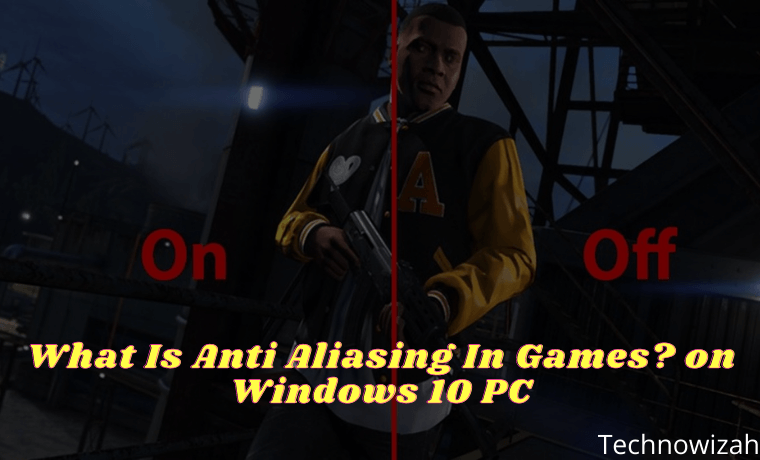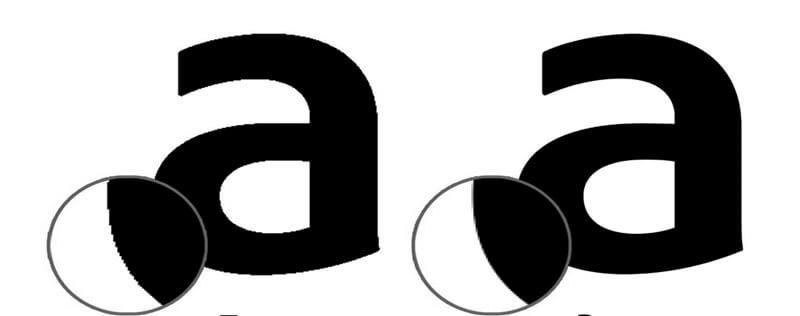What Is Anti Aliasing In Games? on Windows 10 PC – Are you confused about the “anti-aliasing” feature in video game settings? Learn what anti-aliasing is and how it can improve the graphics and fonts of the games you play.

What Is Anti Aliasing In Games? on Windows 10 PC 2024
Ever wondered what the term “anti-aliasing” we see all the time in games means, and whether we should enable it or not? And what’s the point of enabling or disabling it? Today, we will explain in detail what anti-aliasing is, how it works, and other related questions.
Read more:
- Download Small Size PPSSPP Game on [Android ISO and CSO]
- Top 16 Latest Best 3D Games For Android 2021 Offline and Online
- 25 Best Small Size Games For PC Windows 10 Laptop PC
- Top 20 Small Size High Compressed ISO PPSSPP Game
What is Anti Aliasing?
You may first notice anti-aliasing when you open the options menu of your favorite video game. Usually, they are labeled with vague and difficult-to-understand terms such as MSAA X5 or CSAA X8. You might leave it in the default settings because you don’t know the function of the feature.
Anti-aliasing is a way to get your computer to play nicely with all those pixels in PC games and smooth it out into century-worthy graphics. In short, it’s a graphic setting that helps get rid of jaggies.
Anti-aliasing is usually used to make games look less boxy. This is a technique for smoothing the edges of jaggies by blending adjacent pixels of the same color. This results in clearer, more realistic-looking images.
How Does Anti Aliasing Work?

Anti-aliasing aims to remove the edge jaggies that we sometimes saw occur when playing at lower graphics settings. Unlike in the real world where we have round objects, the first reason for getting these jaggies edges is the fact that everything we see on the monitor is in pixels, which of course are squares.
To work around this jaggies effect that we see on every slanted or rounded image, we can use anti-aliasing. This setting reduces the aliasing effect in the image by blending the colors essentially, creating a subtle illusion. These mixed effects do sacrifice computing power and can often bring down FPS in games, especially if the user has a low-end PC build.
Types of Anti Aliasing?
Below are various types of anti-aliasing techniques that you can use along with a brief explanation of each type.
Multi-Sampling Anti-Aliasing (MSAA)
One type of anti-aliasing is what is commonly referred to as “multisample anti-aliasing” (MSAA). This is the most common type of anti-aliasing these days which balances performance as well as visual fidelity.
This type of anti-aliasing creates a higher-fidelity image using multiple “samples” of at least two pixels. The more samples, the better the image quality. But it does require more GPU power, luckily MSAA tops out at eight samples and doesn’t exceed that.
Supersample Anti-Aliasing (SSAA)
Supersample Anti-Aliasing is by far one of the best and most effective anti-aliasing techniques available today. It makes your GPU load the game at a higher resolution and then downsamples the image. Higher resolutions increase the number of pixels, making images look sharper. But again, the downside is that it requires a high-end and powerful GPU with additional video memory.
Fast Approximate Anti-Aliasing (FXAA)
FXAA is one of the least resource-consuming anti-aliasing techniques. So if you want anti-aliasing but don’t own or want to buy a high-end PC, FXAA is the way to go. It blurs the jaggies edge of the image instead of running all the calculations and uses the GPU’s power to do it, resulting in much faster results with the least performance impact on your PC.
Temporal Anti-Aliasing (TXAA)
TXAA is a relatively new type of anti-aliasing that is only seen in newer GPUs. It incorporates several anti-aliasing techniques to soften the edges of the image. It’s not as demanding as some other anti-aliasing techniques but it produces better-quality images than FXAA. However, you may still see some blurry images.
Morphological Anti-Aliasing (MLAA)
TXAA’s anti-aliasing technique refines edges by spotting differences between pixels. Unlike TXAA, which focuses more on quality than performance, MLAA doesn’t overwhelm your PC. It is more efficient and balances quality and performance on what is required.
However, the downside of this method is that it can sometimes go wrong, resulting in distorted text when mixing the background and foreground parts of the image.
Nvidia And AMD Anti-Aliasing
AMD also has its anti-aliasing technology called CSAA, and Nvidia has CFAA anti-aliasing. Nvidia’s CSAA is more efficient and reduces the load on your GPU by sampling fewer colors but producing images with less accurate colors because of it.
Whereas AMD CFAA uses edge-detection algorithms for better line filtering without color loss, it comes with higher GPU power requirements than Nvidia anti-aliasing.
Which Type of Anti-Aliasing Should I Use?
There are many different types/of anti-aliasing techniques available, but you may only see one or two depending on which game you are using. So which anti-aliasing should we choose/use?
SSAA is the best choice if your computer can handle the load it puts out. But if your computer can’t afford it, AMD anti-aliasing techniques and NVIDIA EQAA or CSAA are the best options.
On mid-range PCs that don’t have AMD and NVIDIA EQAA or CSAA, you have the option of using MSAA. And those with low-end PCs, you should stick with FXAA if you want to stick with anti-aliasing without upgrading your PC.
The size of your display has an impact on aliasing as well. For example, if you’re playing a game with a 21-inch full HD 1080p screen, you probably won’t see much aliasing. But if your screen is a 40-inch TV with 1080p resolution, you’ll notice more of the difference.
Should I Enable Or Disable Anti-Aliasing?
There are benefits to both. If you play a game and want to see the best appearance of the game, turn on anti-aliasing. What anti-aliasing smooths out the jaggies of the image edges?
Jaggedness is the same as aliasing, so by enabling anti-aliasing, you get a smoother-looking game. What you don’t get is smoother gameplay, as enabling anti-aliasing means making your GPU do more calculations per frame to achieve smoothing. That means it can reduce the FPS in your game.
When you are playing a game, you may feel willing to sacrifice a bit of a beautiful display for a faster playing speed. So that’s the real question, do you want to spoil your eyes or want to play faster? It all depends on your choice.
Read more:
- 6 Best Ways to Update PUBG Mobile on Android IOS
- 15 Best PS Vita Games in 2021, Must Play!
- How to Change Name in PUBG: Quick Ways
Conclusion:
So what is anti-aliasing? To put it simply, anti-aliasing is a technique used to remove jaggies or effects such as “ladders” on the edges of video game graphics to make it look somewhat smoother. But the fact is, modern games don’t even require anti-aliasing in some cases.
But still a good idea, you understand what anti-aliasing is and how it works, as I have explained in this article. Knowing about it helps you make the right decision whether to focus on quality or performance in your PC games.
Don’t forget to bookmark and always visit every day Technowizah.com because you can find here the latest Tech Computer Android games How-to Guide Tips&Tricks Software Review etc, Which we update every day.











![10+ Ways To Take Screenshot on Asus Laptop Windows 10 [2024] How To Take Screenshot on Laptop and PC Windows](https://technowizah.com/wp-content/uploads/2020/06/How-To-Take-Screenshot-on-Laptop-and-PC-Windows-100x70.jpg)
